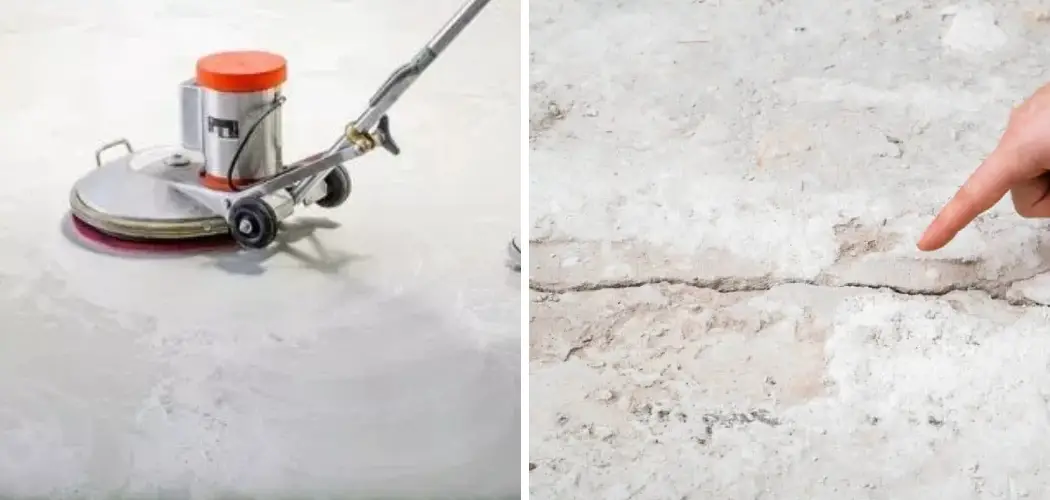If you’re like most homeowners, the concrete basement floor of your home probably doesn’t get a lot of attention – until it’s time to clean! Cleaning an unsealed basement can be intimidating at first.
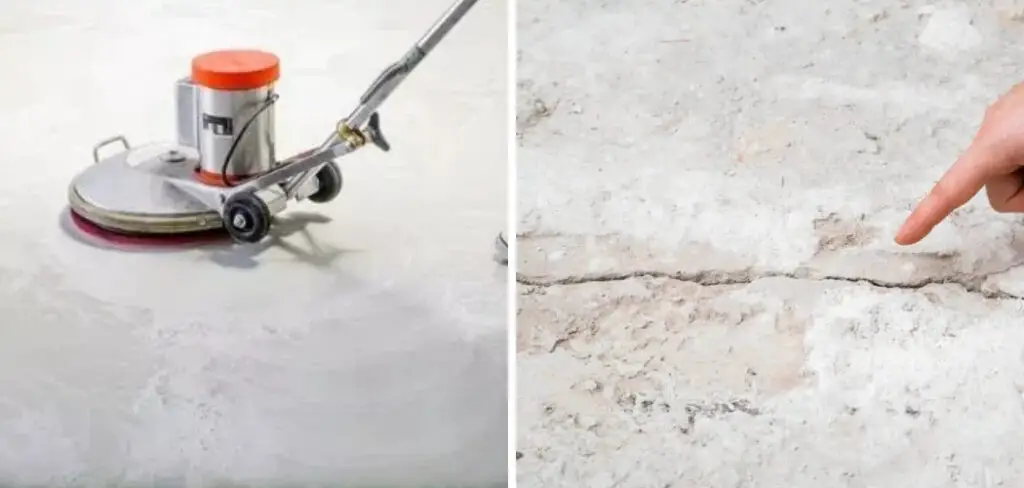
But with daily maintenance and regular deep-cleaning sessions, you’ll soon have that grey and grimy concrete shining again. In this blog post, we’ll give you all of our tips for how to clean unsealed concrete basement floor – no matter how thick the dirt or years’ worth of grime! Read on to learn everything you need to know about cleaning unsealed concrete floors properly!
What Is the Best Cleaner for Unsealed Concrete?
The best cleaner for unsealed concrete depends on the type of dirt or stain you’re trying to remove. Generally, a mild detergent and water solution is enough for light cleaning. For tougher stains, like grease or oil, an alkaline cleaner may be more effective. A pressure washer can also be used to loosen stubborn dirt from unsealed concrete. Be sure to check the manufacturer’s instructions for the proper use and safety precautions before using a pressure washer on your unsealed concrete floor.
Additionally, you may want to consider sealing the floor after it is cleaned to help protect it from future staining. Sealing will also make cleaning easier since liquids won’t be absorbed as quickly by the concrete. There are many sealants available, including water-based, oil-based, and epoxy products. Choose one that is best suited to your specific needs. With the right cleaner and sealant, you can keep your unsealed concrete looking great for years to come!
Once the floor is cleaned and sealed, it is important to maintain it regularly. This may include sweeping or mopping with an appropriate cleaner. If possible, avoid using harsh cleaners or scouring pads that can damage the sealing. Additionally, use mats or rugs at entry points to help reduce dirt and debris tracked onto the floor.
9 Methods on How to Clean Unsealed Concrete Basement Floor
1. Mopping
One of the simplest ways to clean a concrete basement floor is to mop it. You can use a regular mop or a steam mop. If you are using a regular mop, fill a bucket with warm, soapy water and dip your mop into it. Wring out the excess water before you start mopping. Start at one corner of the basement and work your way across. Be sure to rinse out the mop in between passes, as you don’t want to spread dirt around. After you’ve finished mopping, rinse the floor with clean water and allow it to dry completely.
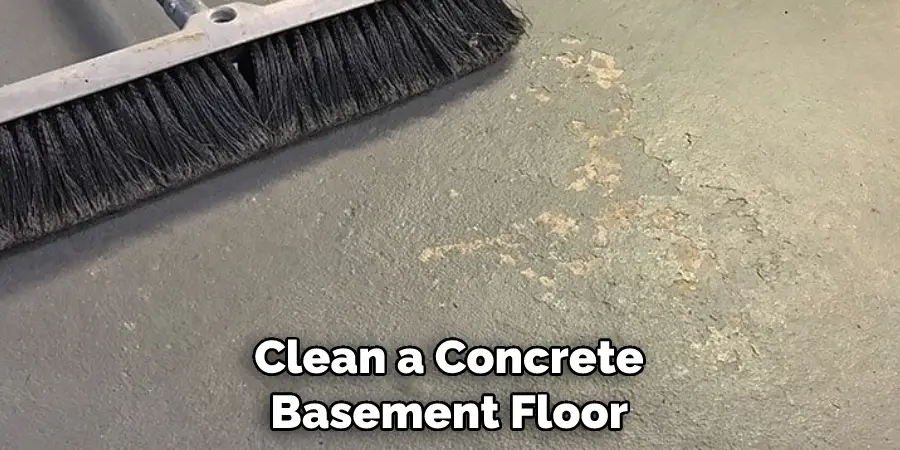
2. Sweeping
Another way to clean a concrete basement floor is to sweep it. You can use a broom or an electric sweeper. For a thorough job, sweep in two directions, first going one way and then the other. Make sure to get into any hard-to-reach corners and crevices. When you are done, dispose of the dirt and dust in a garbage bag or outside a trash can. If you want to get rid of any odor, you can sprinkle a bit of baking soda over the area before sweeping. While sweeping, also look out for any debris that may be on the floor and pick it up. This will prevent it from getting stuck in the bristles of your broom or sweeper.
3. Vacuuming
Vacuuming is another effective way to clean a concrete basement floor. You can use a regular vacuum cleaner or an industrial vacuum cleaner. Vacuuming will help remove dust, dirt, and other debris.
Be sure to vacuum in one direction so that the suction is more effective at picking up dirt. You can also use a dust mop or a damp cloth to get rid of any excess dirt or grime on the floor. When vacuuming, make sure you take your time so that you don’t miss any spots. You may also want to use a vacuum attachment with a brush head to help remove tough stains.
4. Pressure Washing
If you have access to a pressure washer, you can use it to clean your concrete basement floor. Before using the pressure washer, make sure that it is set to a low-pressure setting of about 800 PSI. This will help prevent damaging the concrete in the process. Start pressure washing at one corner of the basement and move in sections, spraying and cleaning as you go along. Pressure washing will help to remove any dirt, debris, and stains that are embedded in the concrete. Once you have completed pressure washing, use a garden hose with a sprayer attachment to rinse off the floor. Allow the floor to dry completely before moving on to step 5.
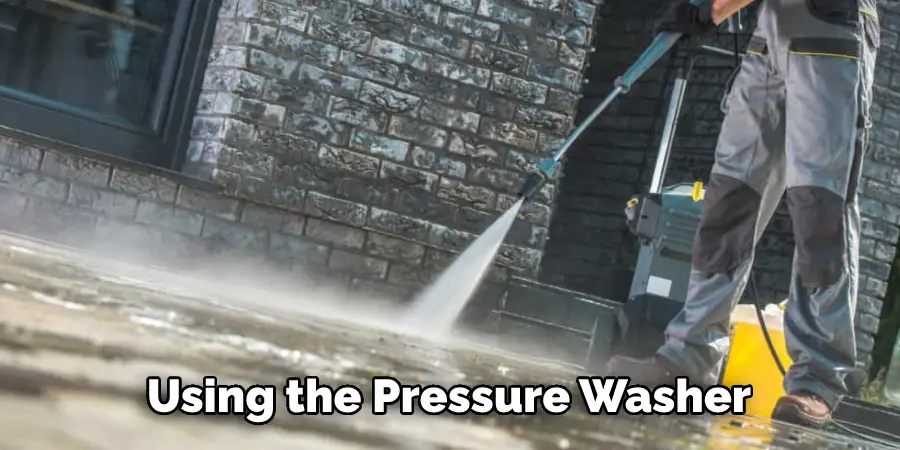
5. Scrubbing
Scrubbing is another effective way to clean a concrete basement floor. You can use a brush or a power washer with a scrub attachment. Start by pouring water onto the floor and then scrubbing vigorously with your brush or power washer. This method is especially effective for removing dirt and grime that are stuck to the surface of the concrete. Make sure to rinse off any cleaning solution before starting this step, as it could damage the concrete if left on too long. Additionally, be sure to wear protective gear when using a power washer, as the pressurized water can be dangerous.
6. Sandblasting
If you have access to a sandblaster, you can use it to clean your concrete basement floor. Sandblasting is an effective way to remove stubborn dirt, paint, and other materials from concrete surfaces. Start by covering any nearby objects with a tarp or plastic sheeting to protect them from the sandblasting process.
Then set up your sandblaster outside of your home and make sure that you’re wearing protective gear such as goggles, respirator, and gloves. Use medium or coarse-grade sand for best results. Start with the lowest pressure setting and gradually increase it as needed.
7. Acid Washing
Acid washing is another effective way to clean a concrete basement floor. You can use muriatic acid or another type of acid wash solution. Always wear protective gear such as rubber gloves and eye protection when working with acidic solutions. Before starting, mop the floor to remove any loose dirt or debris. After that, wet the floor with clean water and then start pouring the acid wash solution on the surface in sections.
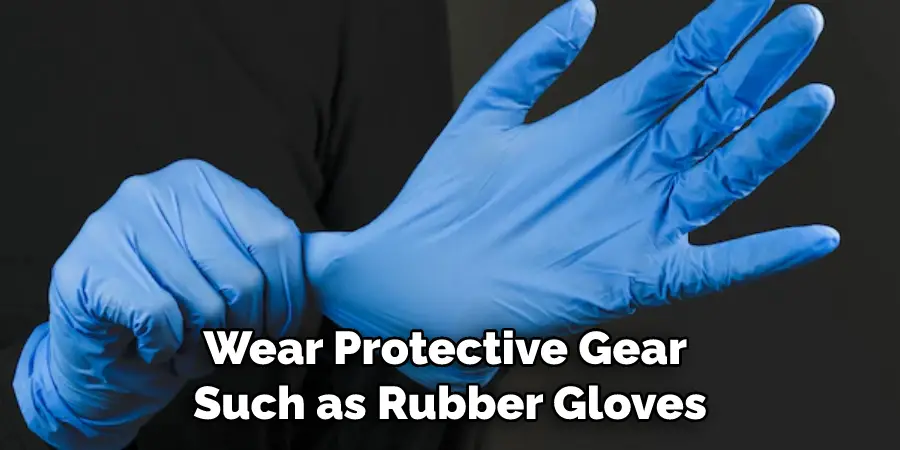
Allow it to sit for a few minutes, and then scrub the area with a stiff brush or broom to remove any dirt and stains. Rinse the area thoroughly with clean water to remove all of the acid solutions. Afterward, you may need to repeat this process a few times until your basement floor is completely clean. Be sure to clean up all of the solutions from the floor and dispose of them properly. Once all of the acids have been washed off, you can start sealing the floor to protect it from further damage.
8. Buffing
Buffing is another way to clean a concrete basement floor. You can use a buffing machine or an electric buffer to buff the floor. Start by using a coarse buffing pad to remove any dirt and debris. Then, switch to a finer-grade buffer pad to polish the floor and make it shiny. Make sure to wear protective eyewear and a dust mask when buffing because the process will produce a lot of dust. Once you’re done, vacuum the floor to remove any remaining dirt and debris. Now your basement floor should look clean and shiny!
9. Waxing
You can also wax your concrete basement floor for added protection against dirt and stains. Choose a wax that is designed specifically for concrete floors, and be sure to follow the manufacturer’s instructions carefully when applying it.
Start by using a clean mop to spread the wax evenly over the entire floor. Once you’ve applied the wax, let it dry for at least 24 hours. Once the wax has dried, you can buff it with a soft cloth to give your floor a nice shine and help protect it against future dirt and stains.
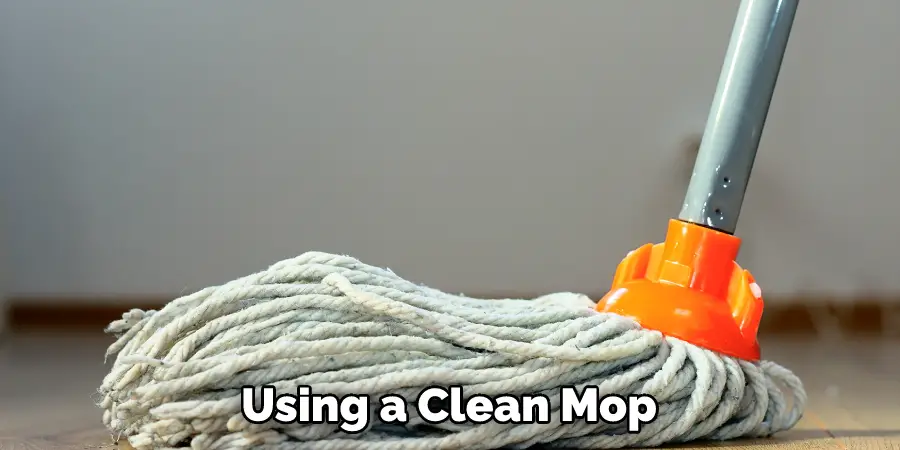
Conclusion
Although it is a bit more challenging to clean unsealed concrete basement floors, with the right tools and cleaners, it can be done quickly and easily. Be sure to test any cleaner in a small area before using it on the entire floor. Once you have found a cleaner that works, make sure to follow the directions on how to clean the unsealed concrete basement floor.
For best results, cleanse regularly and deep-clean as needed. With a little time and effort, your unsealed concrete basement floor will look great! We hope this guide on how to clean unsealed concrete basement floor was helpful. Please share it with your friends on social media if you find it useful. And be sure to check back here soon for more informative guides like this one.

